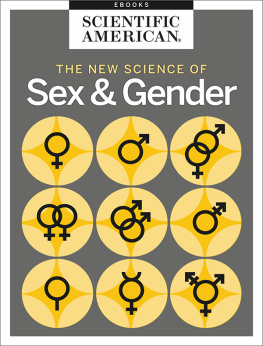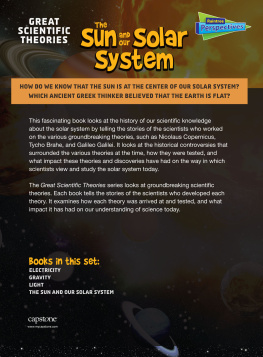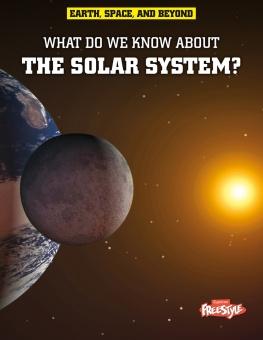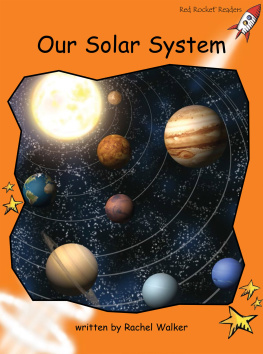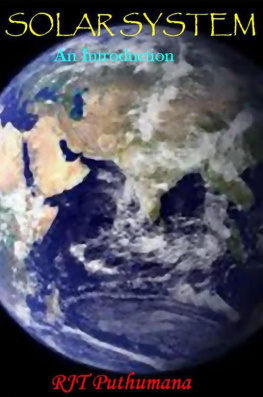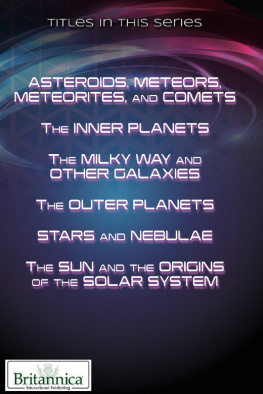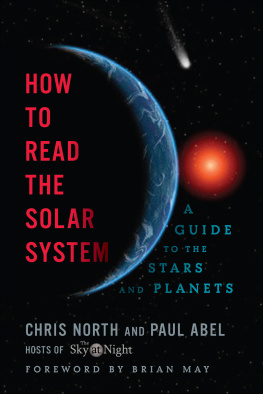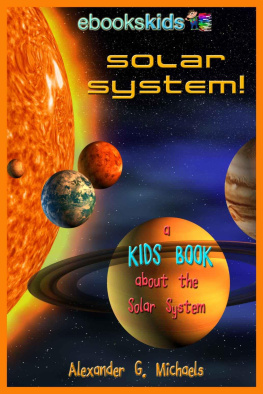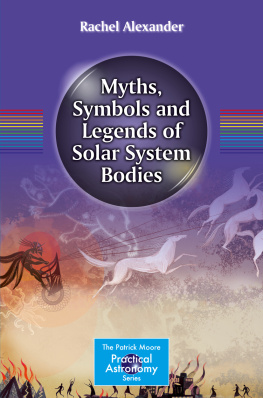Editors of Scientific American - Understanding the New Solar System
Here you can read online Editors of Scientific American - Understanding the New Solar System full text of the book (entire story) in english for free. Download pdf and epub, get meaning, cover and reviews about this ebook. year: 2002, publisher: Grand Central Publishing, genre: Children. Description of the work, (preface) as well as reviews are available. Best literature library LitArk.com created for fans of good reading and offers a wide selection of genres:
Romance novel
Science fiction
Adventure
Detective
Science
History
Home and family
Prose
Art
Politics
Computer
Non-fiction
Religion
Business
Children
Humor
Choose a favorite category and find really read worthwhile books. Enjoy immersion in the world of imagination, feel the emotions of the characters or learn something new for yourself, make an fascinating discovery.

- Book:Understanding the New Solar System
- Author:
- Publisher:Grand Central Publishing
- Genre:
- Year:2002
- Rating:4 / 5
- Favourites:Add to favourites
- Your mark:
- 80
- 1
- 2
- 3
- 4
- 5
Understanding the New Solar System: summary, description and annotation
We offer to read an annotation, description, summary or preface (depends on what the author of the book "Understanding the New Solar System" wrote himself). If you haven't found the necessary information about the book — write in the comments, we will try to find it.
Editors of Scientific American: author's other books
Who wrote Understanding the New Solar System? Find out the surname, the name of the author of the book and a list of all author's works by series.
Understanding the New Solar System — read online for free the complete book (whole text) full work
Below is the text of the book, divided by pages. System saving the place of the last page read, allows you to conveniently read the book "Understanding the New Solar System" online for free, without having to search again every time where you left off. Put a bookmark, and you can go to the page where you finished reading at any time.
Font size:
Interval:
Bookmark:
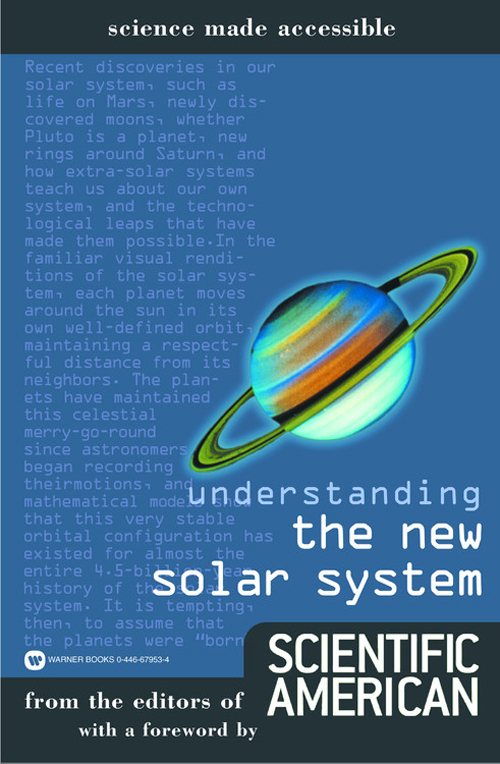
Copyright 2002 by Scientific American, Inc., and Byron Preiss Visual Publications, Inc.
All rights reserved.
The following essays first appeared in the pages of Scientific American magazine, as follows: SOHO Reveals the Secrets of the Sun by Kenneth R. Lang, March 1997. The Pioneer Mission to Venus by Janet G. Luhmann, James B. Pollack and Lawrence Colin, April 1994. The Mars Pathfinder Mission by Matthew P. Golombek, Scientific American Presents, 1999. Migrating Planets by Renu Malhotra, September 1999. The Galileo Mission to Jupiter and Its Moons by Torrence V Johnson, February 2000. Bejeweled Worlds by Joseph A. Burns, Douglas P. Hamilton and Mark R. Showalter, February 2002. Journey to the Farthest Planet by S. Alan Stern, May 2002. The Kuiper Belt by Jane X. Luu and David C. Jewitt, May 1996. The Oort Cloud by Paul R. Weissman, September 1998. Quest for the Limits of the Heliospere by J.R. Jokipii and Frank B. McDonald, April 1995.
Warner Books, Inc.
Hachette Book Group
237 Park Avenue, New York, NY 10017
Visit our website at www.HachetteBookGroup.com.
First eBook Edition: December 2002
ISBN: 978-0-7595-2747-8
David H. Levy
L ast night I set up a chair in the yard and looked up at the western sky. Five bright planets stared back, forming a tight grouping. Mercury was low in the west, flanked by a bright triangle of Venus, Mars, and Saturn. Much higher in the sky, Jupiter capped them all. These are the same five worlds that ancient cultures knew as wandering stars. Throughout most of recorded history, these wanderers were visualized to be circling the Earth. That changed in 1610, when Galileo pointed a telescope to Jupiter and discovered its four moonssmaller worlds that circle Jupiter and not the earth. A few months later, when Venus appeared in the evening sky and he began observing it regularly, Galileo discovered its changing phases. He could not interpret these phases in any way if Venus were circling the earth. However, he had no difficulty interpreting them if he assumed that Venus was circling the sun.
Thanks to his telescope, Galileo was the first to show the planets as orbiting the sun. He paid dearly for his conclusion. Summoned and tried before the Holy Office, Galileo was forced to recant, and to assert that the earth occupied the center of the solar system. If Galileo could come back for a visit somehow, imagine the surprise he would feel knowing that a mighty spacecraft bearing his name was now cruising through the Jupiter system, taking close-up images of the worlds he discovered so long ago. The spacecraft has observed volcanoes on Io, and a comet collision on Jupiter, items that stagger the mind and kindle the imagination.
Now would be a good time for Galileo to return, for we are undergoing a revolution in our understanding of the solar system that rivals what happened in Galileos time. This second revolution actually began on October 4, 1959, when Luna 3 began its journey from the Soviet Union to the moon. A few days later it photographed the far side, giving humanity its first view of a part of the Moon never seen before. The revolution entered a new phase three years later, when in December 1962 the American spacecraft Mariner 2 reached Venus. Its successful journey was our first-ever visit to another planet. Since then we have seen triumph after triumph: the first human visit to the moon in July 1969; a robotic landing on Mars in 1976; the odyssey of Voyager 2 to Jupiter, Saturn, Uranus, and Neptune; the Magellan probe of Venus; Galileos tour of the Jupiter systema list of events that hopefully will stretch out, like the line of Banquos kings in Macbeth, to the crack of doom.
This revolution was helped along by Nature herself. On March 23, 1994, Carolyn and Gene Shoemaker and I took three pictures of a region of the sky near Jupiter, and discovered a fractured comet on those films. Comet Shoemaker-Levy 9, as it was called, had a few months earlier made an extremely close approach to Jupiter, close enough that Jupiters tidal forces tore the comet into pieces. What we did not know that March was that the comet was headed directly to a collision with Jupiter in July 1994. During one incredible week, 21 fragments of the completely disrupted comet pummeled into Jupiter, yielding the largest planetary explosions ever seen by humanity.
The collisions were a watershed in our understanding of the solar system. In its earliest years, cometlike bodies called planetesimals hit each other to create and build up our system of planets. Comets persisted in colliding with the newly formed planets, bringing with them their precious organic materials and eventually setting off the origin of life, at least on Earth. Much later, a collision ended the era of the dinosaurs, opening the way for mammals and humanity. The breakup and collision of tiny comet Shoemaker-Levy 9 showed us how this process works.
What an amazing time to be alive! Our solar system is being studied in greater detail and in more ways than ever, and it has also provided its own road show on a scale never before seen. The book you have before you offers a way to understand and enjoy what is happening. I hope it will help you to find your way into humanitys new treasure trove of information and understanding of the true center of our universenot our planet, but our entire solar family.
Sandy Fritz
I t is from the perspective of our safe blue planet that we view with awe and wonder the night skies. Hundreds of thousands of points of lights twinkle overhead. Some are faraway stars, some form the familiar constellations, and some are reflections of the solar light from much closer celestial bodies that also orbit our sun. They are the companion planets of Earth in the solar system.
Each of the nine planets has unique qualities that are revealed in how each one responds to the input of solar energy. Mercury maintains a powerful magentosphere that partly protects its surface from the raw power of the sun. Venus, with its unique clockwise spin, heats up to 450 degrees Celsius at the surface and cycles sulfuric acid through its atmosphere. Earth seems to enjoy an ideal environment for life as we know it. The four inner planets are solid and rocky in construction, with molten cores. But it is the outer planets that draw the attention of most scientists who study the solar system today.
The outer planets have an entirely different character from the inner planets. Saturn, Jupiter, Uranus and Neptune are sometimes referred to as the gas giants. These planets incorporate much more of the gaseous elements in their structures, as opposed to the inner, rocky planets. Jupiter and its network of moons can almost be considered a solar system unto itself. It produces more energy than it receives from the sun, and it has captured an impressive array of orbiting bodies. The larger of Jupiters moons rival Mercury in size.
The four gas giants also sport ring formations. A delicate interplay between a planets gravity, its orbit, and its distance from the sun gives rise to these structures. No two planetary ring systems are exactly alike, and none are static.
The farthermost known planet in the solar system may actually be a binary system. Pluto and its moon Charon are nearly the same size, and the pairs erratic orbit around the sun sometimes takes it inside the more orderly orbit of Neptune, and sometimes outside of it. Pluto has recently been suspected of belonging to a belt of smaller pieces of rock and dirty snowballs that were swept to the outer reaches of the solar system over time. The Kuiper belt, the innermost fringe of which is patrolled by Neptune, may be the origin of some of the comets that sweep through the solar system. Perhaps other Pluto-sized bodies are harbored within it, out of reach of our telescopes. An even farther ring of matter may gather around the distant fringes of the solar system. The Oort cloud, still undetected but predicted by theory, may also harbor comets and rocky bodies.
Font size:
Interval:
Bookmark:
Similar books «Understanding the New Solar System»
Look at similar books to Understanding the New Solar System. We have selected literature similar in name and meaning in the hope of providing readers with more options to find new, interesting, not yet read works.
Discussion, reviews of the book Understanding the New Solar System and just readers' own opinions. Leave your comments, write what you think about the work, its meaning or the main characters. Specify what exactly you liked and what you didn't like, and why you think so.

